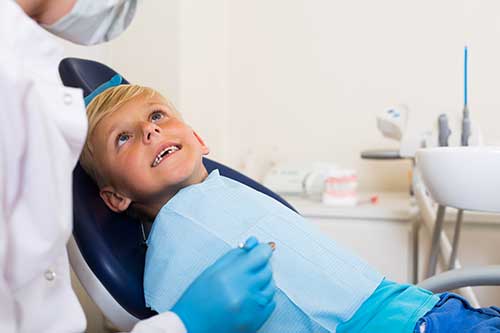More About Legacy Orthodontics
More About Legacy Orthodontics
Blog Article
The smart Trick of Legacy Orthodontics That Nobody is Talking About
Table of Contents9 Easy Facts About Legacy Orthodontics DescribedThe smart Trick of Legacy Orthodontics That Nobody is DiscussingLegacy Orthodontics Things To Know Before You BuyWhat Does Legacy Orthodontics Do?The Facts About Legacy Orthodontics Revealed
In enhancement, we provide adjustable treatment schedules, versatile payment alternatives and a fun, enjoyable experience.An orthodontist is a dental practitioner trained to detect, avoid, and treat teeth and jaw irregularities. They fix existing conditions and are trained to determine troubles that might develop in the future. Orthodontists deal with people of any ages, from children to grownups. Individuals frequently connect an excellent smile with health.
Malocclusion, or misaligned teeth, can result in oral concerns, consisting of tooth degeneration, gum condition, and difficult or painful chewing. Yet not everyone is born with straight teeth. If you have a negative bite or huge rooms between your teeth, you might intend to get in touch with a dental professional specializing in orthodontic treatment.
About Legacy Orthodontics
( Picture Credit Report: DigitalVision/Getty Images) Orthodontists utilize fixed and removable dental devices, like braces, retainers, and bands, to change the setting of teeth in your mouth. Orthodontic therapy is for oral abnormalities, consisting of: Jagged teethBite problems, like an overbite or an underbiteCrowded teeth or teeth that are also far apartJaw misalignmentThe goal of orthodontic therapy is to boost your bite.
A healthy bite ensures you can eat, chew, and talk effectively. While you could consider orthodontists as generally for kids or young adults that require dental braces, they can remedy oral troubles at any type of age. Orthodontists attend university, dental school, and orthodontic institution. After graduation, they invest 2 or 3 years in an orthodontic residency program.
All orthodontists are dental practitioners, however not all dental professionals are orthodontists. Orthodontic residency programs supply intensive, focused guideline for oral specialists. They focus on 2 locations: Just how to properly and safely relocate teeth Exactly how to properly direct development in the teeth, jaw, and faceOnce an orthodontist has completed training, they have the alternative to end up being board accredited.
More About Legacy Orthodontics
Malocclusion leads to tooth congestion, a twisted jaw, or irregular bite patterns. Malocclusion is typically treated with: Your orthodontist affixes steel, ceramic, or plastic square bonds to your teeth.
Some people require a headwear to assist relocate teeth right into line with pressure from outside the mouth. A retainer is a custom-made tool that maintains your teeth in place.
They can develop extra area in the mouth without having to pull teeth. Orthodontists use cords, medical screws, or plates to support your jaw bone.
You might require to see an orthodontist if you have: Crowding or otherwise adequate space for every one of your teethOverbite, when your upper teeth come by your base teethUnderbite, when your bottom teeth are as well much forwardSpacing or concerns with gapsCrossbite, which is when your top teeth fit behind your bottom teeth when your mouth is closedOpen bite or a vertical space between your front bottom and upper teethMisplaced midline, when the facility of your bottom and upper teeth don't align Remedying a dental malocclusion can: Make biting, eating, and speaking easierImprove the proportion of our face and your total appearanceEase discomfort from temporomandibular joint problemsDifferent your teeth and make them easier to clean, assisting protect against dental cavity or dental caries It's typically a dental professional that initially notifications misaligned teeth throughout a go to the website routine exam.
The Facts About Legacy Orthodontics Uncovered

Throughout your initial orthodontic assessment, you'll likely have: An oral examPhotos taken of your face and smileDental X-raysPanoramic (360 level) X-rays of your face and headImpressions to produce mold and mildews of your teethThese tests will aid your orthodontist recognize just how to continue with your treatment. orthodontist. An orthodontist is a dental expert that's had training to treat your teeth and jaw
An orthodontist is concentrated on your bite, so something like a broken tooth would certainly be managed by a dental practitioner. Orthodontists are concentrated on your bite, or the way your teeth fit together, and the straightness of your teeth.
Ever before wondered exactly how celebrities constantly seem to have flawlessly lined up teeth? The response commonly hinges on the competent hands of an orthodontist. What specifically does an orthodontist do? Orthodontists are oral professionals who concentrate on fixing abnormalities in the teeth and jaws. Their know-how exceeds just creating a beautiful smile; it includes enhancing your overall oral wellness and feature.
9 Simple Techniques For Legacy Orthodontics

While dental braces are one of the most frequently recognized orthodontic treatment, orthodontists have a varied toolkit at their disposal. The specific method chosen depends upon the seriousness of the situation, the person's age, and specific choices. These reliable dental braces make use of a system of brackets adhered to the teeth and attached by wires.
These detachable trays are personalized to gradually change the teeth's setting. In instances of narrow jaws, palatal expanders can be used to create room for proper tooth positioning.
Report this page